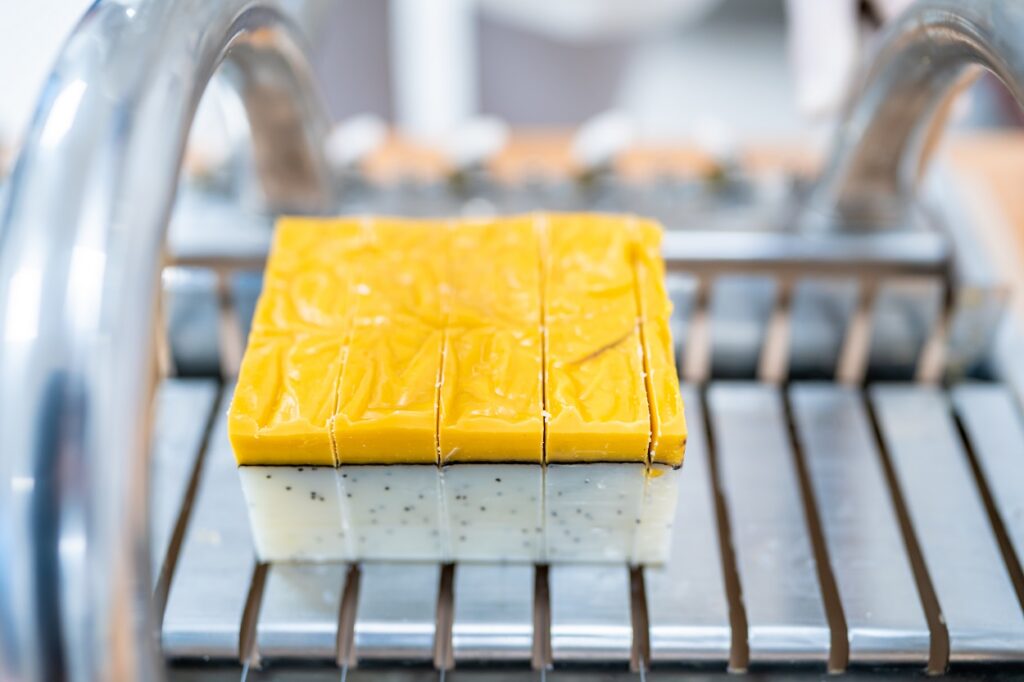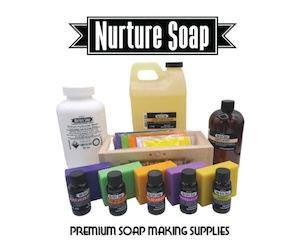Superfatting In Soap Making:
Some of the more common terms used in homemade soap making are water discounting, trace, and gel phase. What about superfatting in soap making?
The concept of “superfatting” in soap making can indeed be perplexing for novice soap makers. Even when we embarked on our soap-making journey a few years ago, it left us scratching our heads too. So, what exactly does superfatting entail in the realm of soap making?
Related Article: Cold Process Soap Making Supplies: Nurture Soap’s 5-Star Excellence

Let’s Start with the “BIG” Picture!
In an effort to help explain superfatting, let’s break it down in terms of what exactly happens as soap is being made. Once your oils and/or butters are mixed together with your lye solution, the saponification process begins. Meaning, that the chemical process of your lye and your oils and/or butters has begun.
Indeed, every oil possesses its unique saponification value, as we discussed in our SAP value blog. This value represents the quantity of lye required to transform 1 gram of oil into 1 gram of soap.
So, when we combine our lye solution (typically lye + water) with our chosen oils, there’s an actual mathematical formula governing the calculation of the precise amount of lye needed to convert a specific quantity of a particular oil into soap.
As the chemical reactions commence, lye molecules begin to bond with the molecules of the selected oils, causing the mixture to heat up, initiating the process of creating a new substance…soap!
Related Article: Base Oils and Their Fatty Acid Properties In The Soap Making Process
Where Does The Term ‘Superfatting’ Come into Play?
You might be thinking, “So, we need just enough oil(s) and just enough lye to completely neutralize each other?” This concept is known as “zero superfat.”
The answer is a bit nuanced. While we certainly don’t want any excess lye remaining in the soap, having absolutely no oils left would likely result in a soap that lacks moisturizing properties in the finished product.
That’s where superfatting comes into play. It involves adding extra oils or fats to the soap recipe. These additional oils and fats contribute to the soap’s moisturizing properties, also known as “emollient” properties, resulting in a more desirable bar of soap.
Normal Ranges of Superfatting:
Normally you will see the averages between 5% – 7%. That means 5-7% extra oils/fats in the recipe once your bar of soap is made.
Warning! About Superfatting!
It’s important to strike a balance with superfatting and not go overboard with the extra oils. Excessive superfatting can lead to an undesirable, overly soft bar of soap.
Additionally, keep in mind that oils themselves can spoil, and excessive extra oils can increase the likelihood of your soap developing “dreaded orange spots” or DOA.
There is one exception to the usual superfatting rules, and that’s when making 100% coconut oil soaps. In this case, it’s recommended to superfat at around 20%. Coconut oil is known for its cleaning properties, but at 100%, it would be too harsh and strip away natural oils from your skin, leaving it dry and uncomfortable.
Final Thoughts!
Most lye calculators automatically calculate the superfatting aspect. You input 5%, 6%, or 7%, and it calculates the excess oils needed to achieve that level of superfatting.
Soap making is both a science and an art, and the level of superfatting should align with your soap’s intended use and desired properties. Consider your goals for each batch of soap and what end properties you want it to possess.
Trial and error is a common part of the soap-making process. Soaps may not always turn out as planned, but each attempt is an opportunity for learning and improvement. We hope you found this post on superfatting in soap making informative and helpful!
If you’re looking to get into making soap, another great place to start is Nurture Soap. They have everything you need to start you soap making journey and excellent resources.



